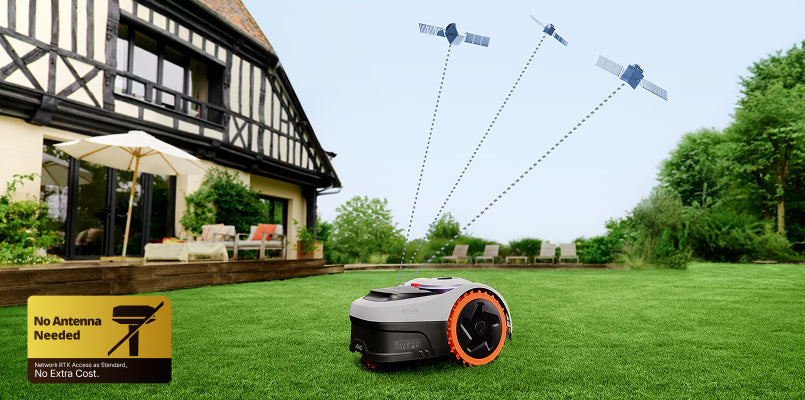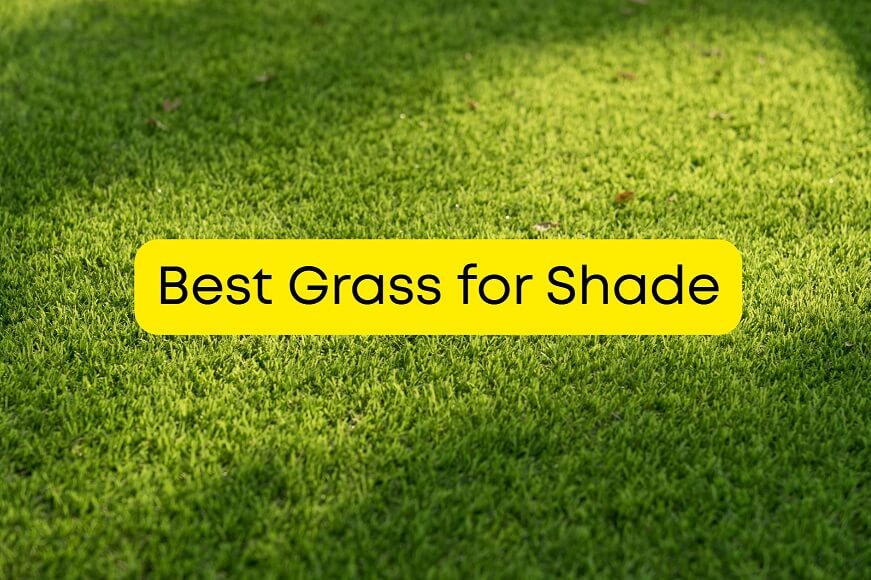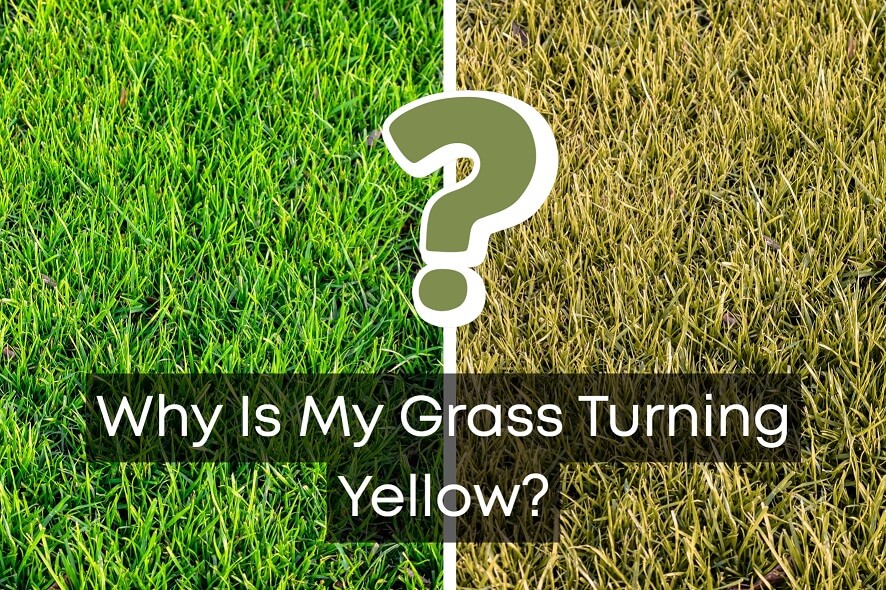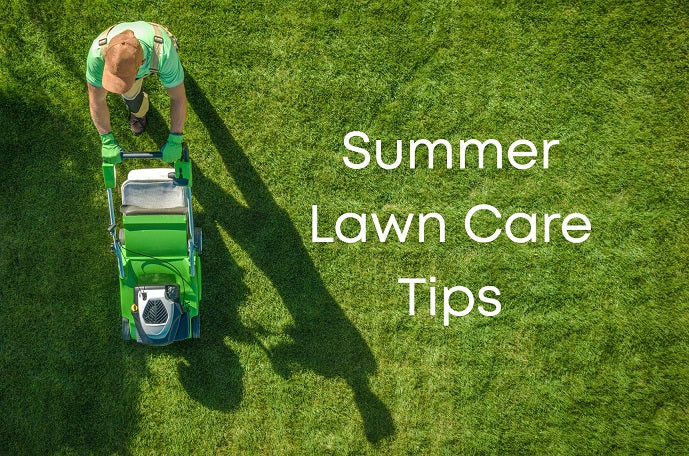Mowing the lawn involves more than cutting the grass. It’s about picking the right mower, setting the right height, defining the boundary, and so on. If you would like to make your lawn distinguishable, one of the effective methods is through edging. This article will introduce some of the best lawn edging ideas to keep your grass out and make your lawn uniquely beautiful.
Why Lawn Edging Is Important?
Lawn edging might seem like a simple task or be time-consuming, depending on the complexity of your lawn and how far you want to go to enhance its overall appearance. After all, lawn edging is an essential part of landscape design.
Needless to say, lawn edging creates a clear boundary between grass and flowerbeds, sidewalks, or driveways. Defining a boundary makes your lawn look neat by preventing grass from growing into other areas and sabotaging other plants. Also, a clear line means safety—there will be no grass or weeds on the sidewalks to trip you.
Additionally, lawn edging acts as a physical barrier that keeps your soil contained during heavy rain periods, when soil can be easily washed away. It also helps manage water flow, reducing surface runoff and directing water towards plant roots, so your lawn has the nutrient-rich soil to grow on.
In summary, lawn edging is a vital practice that enhances both the look and health of your landscaping.
10 Lawn Edging Ideas for a Beautiful Landscape
After cutting, you can add mulch or decorative items along the edge to help maintain the boundary and enhance the aesthetic. As for decoration, here are some of the best lawn edging ideas to consider.
1. Metal Edging
Metal is highly resistant to water, UV damage, and other common damage in daily life. Once installed, metal requires minimal maintenance, making it a worry-free, practical lawn edging idea. And metal helps can create sharp, precise, and polished lines for pathways and flowerbeds, contributing to a modern, sophisticated aesthetic. Moreover, some metals, including copper, aluminum, and steel, can be easily bent and shaped, allowing for creative design.

2. Plastic Edging
If budget is a concern, plastic edging is a cost-effective way. You may use durable, flexible plastic like PVC or HDPE, which are usually made from recycled materials, to create clean, defined borders between lawns and other areas.
Although plastic does not look as modern and sharp as metal, it is lightweight, resistant to water and rot, and can be easily shaped to create curves and lines for versatile customization. And plastic is very accessible. Perhaps you can find plastic items in your garage for edging.
3. Rubber Edging
Rubber is another cost-effective and easy-to-apply edging product. It’s flexible to move and install. It’s durable to withstand the weather. You may use recycled rubber, such as that from car tires, and shape it to form clean, curved boundaries.

Rubber is also a safe lawn edging option. It’s soft and elastic, so it can reduce the risk of injuries, making it ideal for use around children’s play areas and busy walkways.
4. Stone Edging
Stones are durable, natural materials that can withstand the elements over time, adding a rustic, timeless aesthetic to your lawn. Besides its decorative purpose, stones also help contain mulch and soil, preventing weed growth. In some cases, when you have some tasks to do over your lawn but the wet grass is slippery, the stones can act as a foot traffic guide. Granite, limestone, and sandstone, irregularly shaped or polished, are natural and timeless usable materials available in different colors, sizes, and shapes. You may also use manufactured stones or mix with natural stones to create your garden style.

5. Brick Edging
Like stone edging, bricks are a versatile option that can be arranged in various patterns to suit your garden design. They are sturdy and available in a variety of colors and textures, so they are very suitable for creating regular patterns, such as waves, lines, and geometric shapes. Brick edging usually involves digging a trench, laying a stable base for gravel and sand, and then placing and leveling the bricks into the base.
6. Wooden Edging
For a more traditional feel, edge with woods. Compared to other materials, natural woods, be it logs, timber, or branches, tend to rot or decay over time, particularly when put outdoors to undergo weathering from wind and rain. So don’t forget to treat the wood before edging.
To treat wood for outdoor use, first, clean and sand the wood. Then, apply a wood preservative and paint or stain to protect against rot and pests. To enhance durability, apply multiple coats, seal all joints and ends.
7. Living Edging
Living lawn edging uses plants, rather than artificial barriers, to define the border, creating a natural, organic look and a vibrant transition. Evergreen shrubs like boxwood and dwarf juniper, flowering perennials like hardy geraniums, dianthus, and alyssum, are ideal plants for lawn edging.

The obvious drawback of living edging is that it requires more ongoing maintenance, such as clearing invasive plants and checking and removing pests. That said, for people who enjoy spending time with nature, living edging is not at all a burden. On the other hand, you may choose plants that require less maintenance, like catmint, succulents, lamb’s ears, clover, and so on.
8. Concrete Edging
The lowest-maintenance choice could be concrete edging. Once installed, it’s a permanent thing, unless you have to change the layout of your lawn or house. Normally, you need to dig a trench, create a solid foundation, pour concrete and then shape the edges with special tools before the concrete hardens completely. Concrete edging makes clean borders and prevents the edges of the concrete from chipping or eroding due to traffic, human interaction, or environmental factors.
9. Bottle Edging
Bottle edging is another environmentally friendly and creative approach to enhance the aesthetic appeal of your lawn. You may not have immediately available stones or woods for edging—you may need to buy them. But I bet you have a few bottles inside your house. If you don’t—bottles are easy to collect.
Bury plastic or glass bottles upside down in the ground, leaving just enough of the neck above the soil to create a clear border. You can use different colored bottles to create unique patterns that reflect your style. If you want to go further, you may cut the bottles in half, empty them, and use them as containers for small plants, stones or other decorative items.

10. Decorative Edging
As the name implies, decorative edging is the use of everything possible to decorate your lawn by creating lines between areas. Stones, wood, bricks, metals, bottles, just to name a few. Mix them in whatever way you like to create a unique style. Materials for decorative edging are easy to get. But getting a polished, finished look by using those materials together is not easy, because working with different materials requires you to know their characteristics and try out different arrangements to see which approach provides the best appeal.
How to Edge a Lawn
Before we get into the detailed lawn edging ideas, let’s have a quick look at how to edge your lawn effectively.
Step 1: Prepare and Define the Edge
Before starting, determine where you want to create your edges. Where do you want the flowerbeds to be? Which direction should the sideways go? Once defined and edged, it may be difficult to redo it, so take your time. You may discuss with your family or even consult a landscape designer before making the decision.
Step 2: Choose the Right Tools
A manual or power edger works best, though some people use a spade or a garden hoe. A trimmer might be needed for clearing and general-purpose trimming where the edger or mower can’t reach. Some mowers come with trimmers, such as the Navimow X3 Series, which integrates mowing and trimming into one creative solution. So check whether your mower has a trimming function before purchasing new tools.

Additionally, measuring tapes or string lines can help you maintain a straight edge. And a rake is needed to clean up the trimmed grass. You might also need gloves to protect your hands while working.
Step 3: Make the Cut
Before edging, you should mow the grass and clean debris. By the way, using a robotic lawn mower can free you from manual and time-consuming mowing. You can set a schedule to let the robot mower do the mowing before you make time for the elaborate edging. If you do not have one, take a look at the Navimow i105 Robotic Lawn Mower. It’s recommended for its boundary-free technology which allows for wire-free setup and precise navigation using both satellite and AI-powered vision systems. It features reliable obstacle avoidance and user-friendly app control for easy scheduling and monitoring.
When mowing is finished, use an edger to cut along the desired line. If using a manual edger, push down firmly and wiggle it back and forth to cut through the grass and soil. For a power edger, follow the manufacturer’s instructions. During operation, keep your movement steady and straight for an even edge. A string line or a plank of wood can be used to guide your path.
Step 4: Clean Up
Once done with edging, use a rake to collect and remove any loose grass clippings and debris; otherwise, your lawn will look like a mess. Then you might water your plants and the surrounding grass to keep them healthy. By the way, don’t forget to clean up the tools you’ve used for edging.
FAQ
What are the common mistakes when edging?
Commonly seen mistakes include choosing the wrong edging material and incorrect edging installation depth. Be sure to take your time to figure out what kind of edging you would like to set up and fully prepare before you start.
When should you start edging your lawn?
You can edge your lawn whenever you want. But spring and summer are good times for lawn edging. And you should edge regularly to keep the grass out and keep the boundary clear.
Do I mow first or edge first?
Mow the lawn before edging. Mowing can get rid of most unnecessary grass, so when it comes to edging, you can deal with a lot less cleanup.
Conclusion
Choosing the right lawn edging can significantly enhance the overall look and functionality of your garden. Consider the style, budget, and maintenance requirements when selecting your material. Hope these lawn edging ideas can help. Whichever option you choose, well-defined edges will emphasize your garden design and keep your garden tidy and beautiful. Happy edging!
More Blog
Bermuda Grass vs. St. Augustine Grass
Planning a new lawn? Thinking about which grass to plant? You might already be weighing up Bermuda and St. Augustine, two of the most common warm-season grasses grown across the southern states. Well, Bermuda and St. Augustine grasses are both...
Best Grass for Shade: Top Varieties for Cool and Warm Climates
For lawns that suffer from the shade of large trees, tall fences, and building shadows, the choice of grasses becomes a bit limited. You can’t go with every grass type because most of them would die due to a lack...
Why is My Grass Turning Yellow? Common Reasons and How to Fix
No one likes to see a yellow lawn patch in their lawn. But it comes uninvited and compels the lawn owner to think about why it happened. Your grass could turn yellow if it is suffering from nutrient deficiency, overwatering,...
When is the Best Time to Plant Grass Seed?
Every lawn owner is eager to get rid of those bald patches and make the lawn lush and green from every corner. But you can’t just grab grass seeds and plant them whenever you want. Beginners often don’t know the...
Summer Lawn Care Tips: Smarter Lawn Care for a Better Season
Summer's finally here. A time when the days are long, the sun is high, and the sweet smell of freshly cut grass hangs languidly in the air. For many of us, a lush, green lawn is the centerpiece of summer,...
Month-by-Month Lawn Care Calendar for the US
Lawns are sensitive, so you have to do everything at the right time, whether mowing, applying fertilizer, or watering. Otherwise, you will end up ruining your lawn while trying to make it healthier. Beginner gardeners and new lawn owners often...







Share: